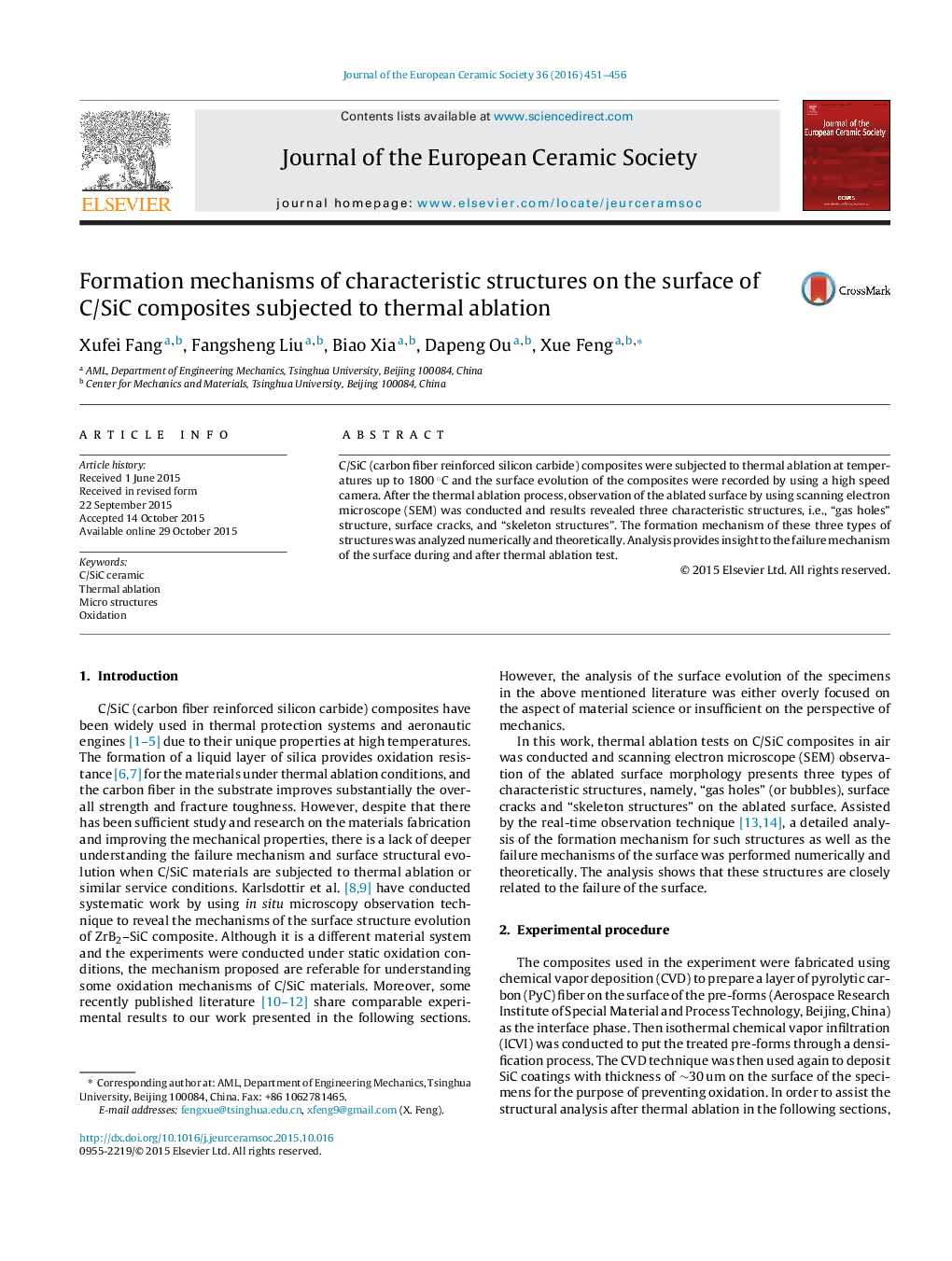| Article ID | Journal | Published Year | Pages | File Type |
|---|---|---|---|---|
| 10629397 | Journal of the European Ceramic Society | 2016 | 6 Pages |
Abstract
C/SiC (carbon fiber reinforced silicon carbide) composites were subjected to thermal ablation at temperatures up to 1800 °C and the surface evolution of the composites were recorded by using a high speed camera. After the thermal ablation process, observation of the ablated surface by using scanning electron microscope (SEM) was conducted and results revealed three characteristic structures, i.e., “gas holes” structure, surface cracks, and “skeleton structures”. The formation mechanism of these three types of structures was analyzed numerically and theoretically. Analysis provides insight to the failure mechanism of the surface during and after thermal ablation test.
Related Topics
Physical Sciences and Engineering
Materials Science
Ceramics and Composites
Authors
Xufei Fang, Fangsheng Liu, Biao Xia, Dapeng Ou, Xue Feng,
